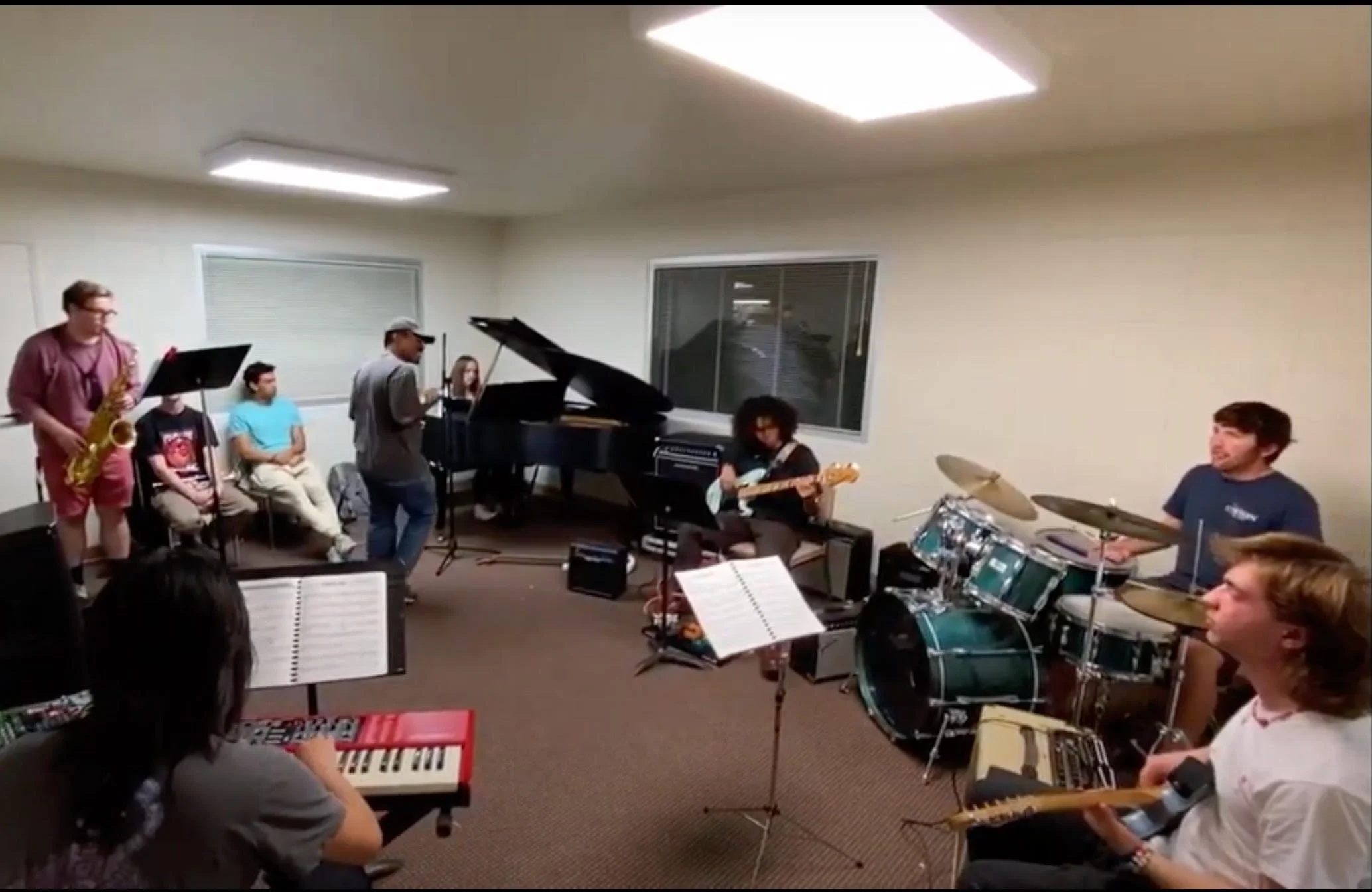Challenging Standards
Source: Jean Lau
Music performance is a world of boundless passion but also incessant uncertainty. Music should encourage openness and collaboration, yet the best musicians are those who embrace the solitude of hours in the practice room. Music should be an avenue for self-reflection, but that self must be precise, rehearsed and confident.
These contrasts can build up an intense internal pressure as students stumble and fall short of expectations. But senior music major Kyle Kinard has devised a clear path forward for those willing to learn.
On the night of Oct. 21, Kinard hosted the first in a series of communal jazz jam sessions held in the Benton studios (a popular practice space located across from the 7/11). Beyond the Herculean task of managing upwards of ten people in the cramped space, this practice time also served as an impressive achievement of balance. In a striking parallel to the genre they strive to uphold, students spent the evening shifting through a series of jazz standards with what can only be described as focused chaos.
“It's a safe environment to mess up, as it always will be,” Kinard said. “I want it to just be a place where we can grow. It's a sense of community. That's what I'm trying to build.”
Kinard stressed the significance of creating a music space on campus that welcomes mistakes in the path towards improvement. Musicians got the opportunity to pick out pieces on the spot, revisiting personal favorites or tackling more difficult works in progress. “A Night in Tunisia.” “Afro Blue.” “Nardis.” With only a cursory glance at their copy of the Real Book (the bible of jazz standards), the crew would dive into new territory, showcasing their talents by gliding through the form and embracing the vulnerability of their imperfections.
As the sun gradually sank and the stark fluorescence of Benton became more pronounced, they eased into a comfortable exchange of advice and instruments with their peers.
The majors and experience levels of the musicians were varied (half the group were engineers), but as the night progressed, it was clear that all present shared the same investment in music as a channel for connection.
“Jazz provides a medium, a language of music that everybody can use to then connect with each other,” Kinard said.”In order for everybody to connect with each other they have to dig deeper and listen to other people. I'm hoping that when people come to these jazz sessions, they can learn it both ways, in a musical and a practical life way.”
Jazz can be an intimidating genre due to the encouragement of active listening and engagement, especially in a group setting. There’s little room for obscuring errors. But by that same token, this stood as a session of small celebrations. Listeners rejoiced as newcomers explored the unfamiliar and steadily gained their footing.
As for the future, Kinard aims for these sessions to continue as a biweekly resource for those aiming to hone their musical skills. The jam sessions will provide a practice space that simultaneously values focused, intentional work and reserves judgment. He ultimately wishes to dissuade the mindset of constant comparison that damages any hobby.
“You can compare all you want,” Kinard said. “But everybody's journey is different, so you might as well embrace it. Why not do it at a jam session?”
“You can compare all you want, but everybody's journey's different, so you might as well embrace it. Why not do it at a jam session?”
With only a cursory glance at their copy of the Real Book, the crew would dive into new territory, showcasing their talents by gliding through the form and embracing the vulnerability of their imperfections.
“Jazz provides a medium, a language of music that everybody can use to then connect with each other…in order for everybody to connect with each other they have to dig deeper and listen to other people.”
